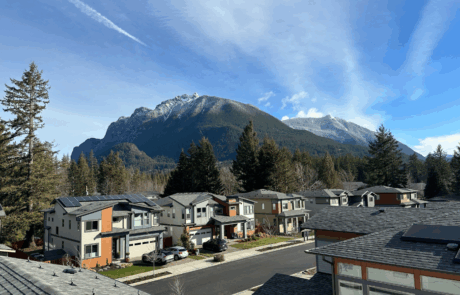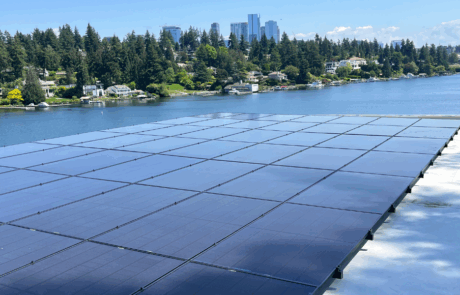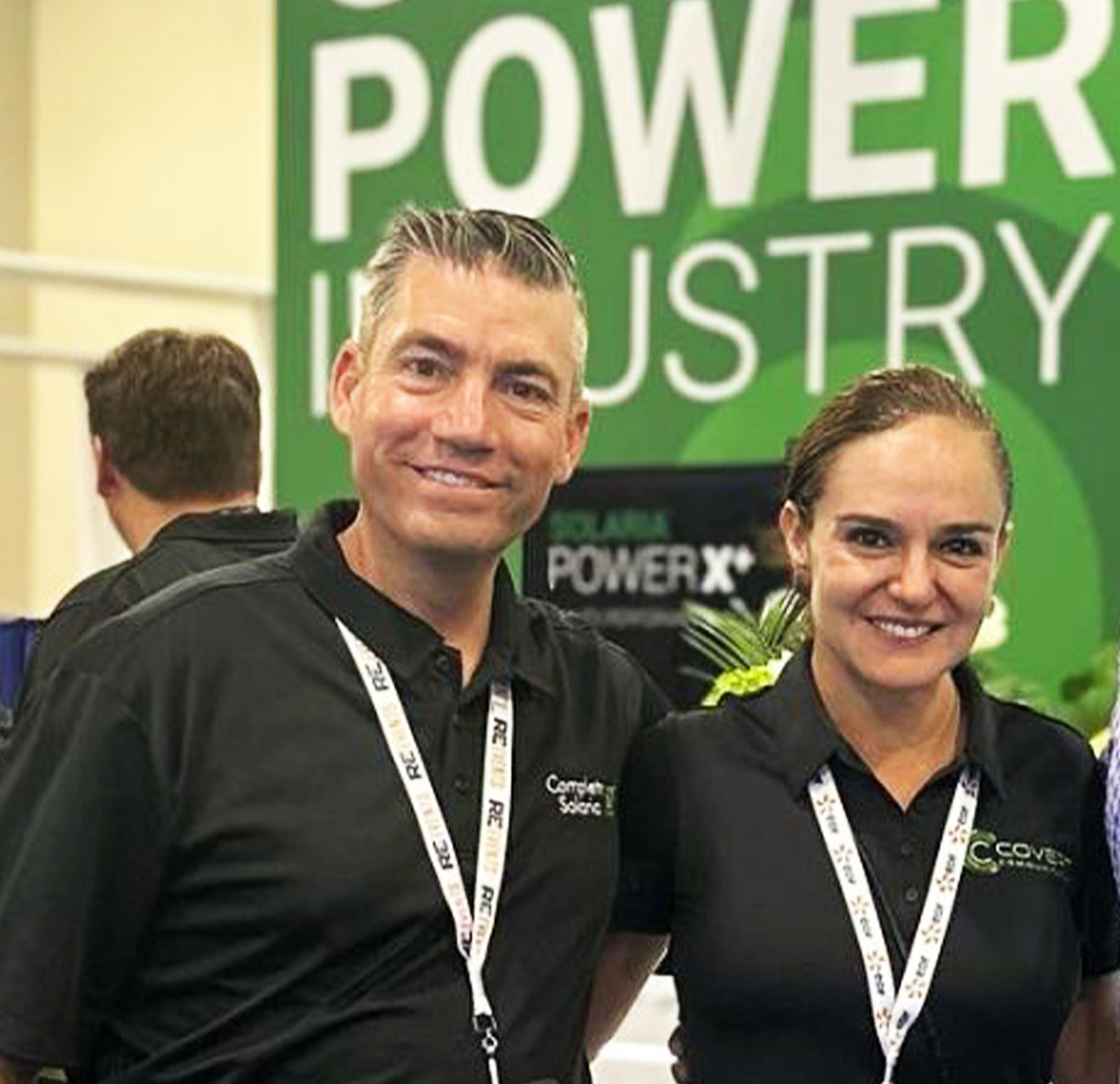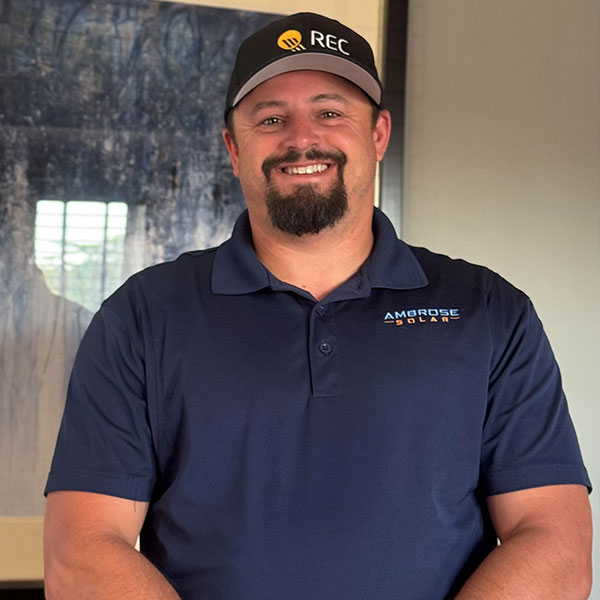Why Washington Said No to Solar Leasing—And What It Means for the State’s Solar Future
Washington’s solar market has always stood apart from the rest of the country. While other states raced to adopt leasing models, Washington made a different choice—one that prioritized local ownership, long-term value, and consumer protection.
To understand how this unique approach shaped the industry, I sat down with Howard Lamb, founder of Sunergy Systems and a solar veteran with more than 30 years of experience. As a founding member of WASEIA (Washington’s solar industry association), Howard has played a key role in the policies that continue to define Washington’s solar market today.
What I learned in our conversation may surprise you—and offers lessons for solar markets everywhere.
Howard: Washington never outright banned solar leases, but in 2005, when the state created its incentive program, it was specifically designed to benefit homeowners—not third parties. The incentive payments could only go directly to the homeowner, not a leasing company. Since our electricity rates are already low, solar needed that incentive to make financial sense. Without it, leasing just didn’t pencil out.
Anna: So the goal was to make ownership the best option?
Howard: Exactly. The state wanted solar to create jobs, promote local manufacturing, and encourage long-term investment in renewable energy—not just have out-of-state companies sweep in, take the incentives, and disappear. The downside of leasing is that once a company has its tax credits and guaranteed payments, they’re not as concerned with quality or longevity. Many leases are structured so that the installer is only required to keep the system operating for 10 years—after that, they’re done. Homeowners could be left with underperforming or poorly maintained systems.
Anna: That makes sense. But don’t leases make solar more accessible for people who can’t afford to buy?
Howard: That’s the big debate, right? Leases do open up access, but at what cost? The problem is that leased systems often don’t generate as much savings for homeowners in the long run. And since the leasing company owns the system, homeowners miss out on incentives like tax credits, energy buyback programs, and production-based incentives. The state had to decide: Do we make solar as cheap as possible right now, or do we set it up so homeowners get the most benefit over time? Washington chose the latter.
How the Washington Solar Incentive Program Worked
Anna: Can you walk me through how the incentive program worked? It sounds like Washington had a really unique approach.
Howard: Oh yes, it was one of the best incentive programs in the country! Homeowners who installed solar got paid per kilowatt-hour (kWh) their system produced—and that was on top of net metering, meaning they were already saving on their electric bills with free power. But the real kicker? If you used Washington-made solar panels and inverters, you could double or even triple your incentive payments. Not only did homeowners benefit from full NEM savings, but they also received a check from the state every year based on their system’s production. It was a huge win for those who went solar.
For example, in addition to NEM, a homeowner would get a check based on the manufacturing on the roof.
✅ If you installed regular solar panels, you got $0.15 per kWh.
✅ If you installed Washington-made panels, that jumped to $0.36 per kWh.
✅ If you used both Washington-made panels and inverters, you got $0.54 per kWh—which was HUGE.
Homeowners would get a check every Q3 based on how much energy they produced. Since the program required two meters—one for net metering (NEM) and another for production tracking—they not only saved on their electric bills but also got paid for every kilowatt-hour generated, regardless of whether they used the power or sent it back to the grid. A typical 10 kW system could bring in around $5,400 per year, with a cap in place to prevent overproduction and ensure fair distribution of funds.
Anna: That’s a great return. So what went wrong?
Howard: The incentives worked too well—some manufacturers took advantage. Silicon Energy, for example, jacked up panel prices to double or even triple the standard cost. They knew homeowners would still technically see a payback, so they figured, why not take all the incentive money for ourselves?
But the problem was, despite the inflated prices, the return on investment wasn’t great. Homeowners were stuck with long payback periods—sometimes 5 to 6 years—and they weren’t even getting the best equipment. It became a loophole that made solar more expensive without delivering real long-term value.
At the same time, SolarCity was lobbying to legalize leasing in Washington, claiming it would expand access to solar. But we had already seen how that played out in other states—leasing companies would burn through incentives and leave, and the local solar industry would collapse. We weren’t going to let that happen here.
Fast forward to today—Silicon Energy is gone. SolarCity? Gone. But the locally owned companies that fought for smarter policies? We’re still here, supporting homeowners and growing the industry the right way.
Anna: So how did the industry respond?
Howard: A bunch of local installers—including me, A&R Solar, South Sound Solar, Fire Mountain Solar, Puget Sound Solar, Whidbey Sun & Wind, and Western Solar—banded together and met with legislators. We weren’t lobbyists, just small business owners who cared about the industry. We explained that if out-of-state companies were allowed to dominate the market, the incentive funds could be gone in nine months, leaving Washington with nothing to show for it.
Legislators listened. They adjusted the program, lowered the bonus for Washington-made equipment, and put in guardrails to prevent companies from gaming the system.
At the same time, we had some key utility companies that actually supported solar. They understood that a well-structured program could help stabilize the grid and provide long-term benefits to both homeowners and the energy market. By working with utilities instead of against them, we were able to shape policies that encouraged responsible solar growth while keeping local jobs and businesses at the forefront.
Anna: It’s impressive how the local industry came together to protect homeowners and ensure solar remained viable in Washington. But with net metering changes on the horizon, what’s next for solar in the state?
Howard: That’s the big question. We know net metering is going away in 2026, so we’re working with utilities to develop an energy storage incentive. The idea is to help homeowners add batteries and allow utilities to tap into them during peak demand—stabilizing the grid without the need for expensive new power plants.
Right now, Puget Sound Energy (PSE) is running a pilot where homeowners receive a one-time rebate plus yearly payments in exchange for allowing the utility to use part of their battery storage when needed. If we can scale this model statewide, it could be a game-changer for both energy resilience and long-term solar adoption in Washington.
Final Thoughts: The Power of Industry-Led Change
Washington’s solar industry made a deliberate choice—one that kept money in the state, protected homeowners, and ensured long-term sustainability. Rather than following the leasing-driven model that took over in other states, local installers stood up and fought for a better path—one that prioritized homeowner benefits, local jobs, and long-term industry stability.
The biggest takeaway? You have the power to shape policy.
Howard Lamb and a group of committed local installers came together, formed the Solar Association of Washington, and used their collective expertise to advocate for policies that truly benefited homeowners. Over time, their efforts evolved into WASIEA (Washington State Solar Energy Industry Association), which united even more in-state installation companies under a single, powerful voice. Because of their leadership, Washington’s solar policies were shaped by those who understood the industry best—the people on the ground installing systems, serving homeowners, and driving real energy change.
Now, with solar policies evolving nationwide and net metering changes on the horizon, the industry is at a pivotal moment. The future of solar will be shaped not only by energy storage incentives, smart grid integration, and new ownership models—like community solar and shared system programs—but also by strong partnerships with utilities, cities, and counties working together to modernize the grid and expand equitable access to clean energy.
As these shifts unfold, who will lead the conversation? Will it be local businesses and seasoned experts who truly understand what homeowners need? Or will it be outside interests chasing quick wins, leaving communities to deal with the fallout?
Across the country, the rules are being rewritten. This is the moment to make waves—to influence policy, elevate your voice, and ensure solar remains both sustainable and accessible. The window for action is wide open—so how will you flip the script?








